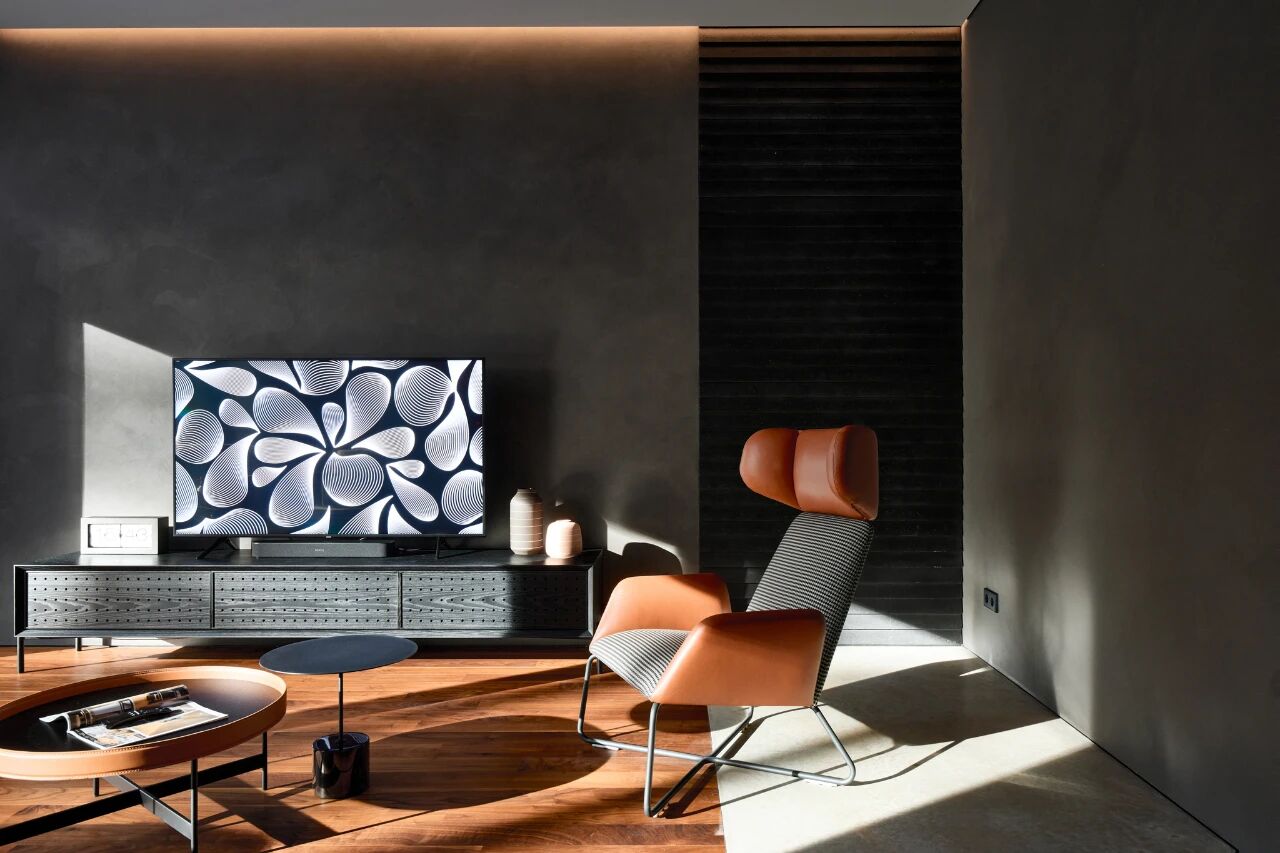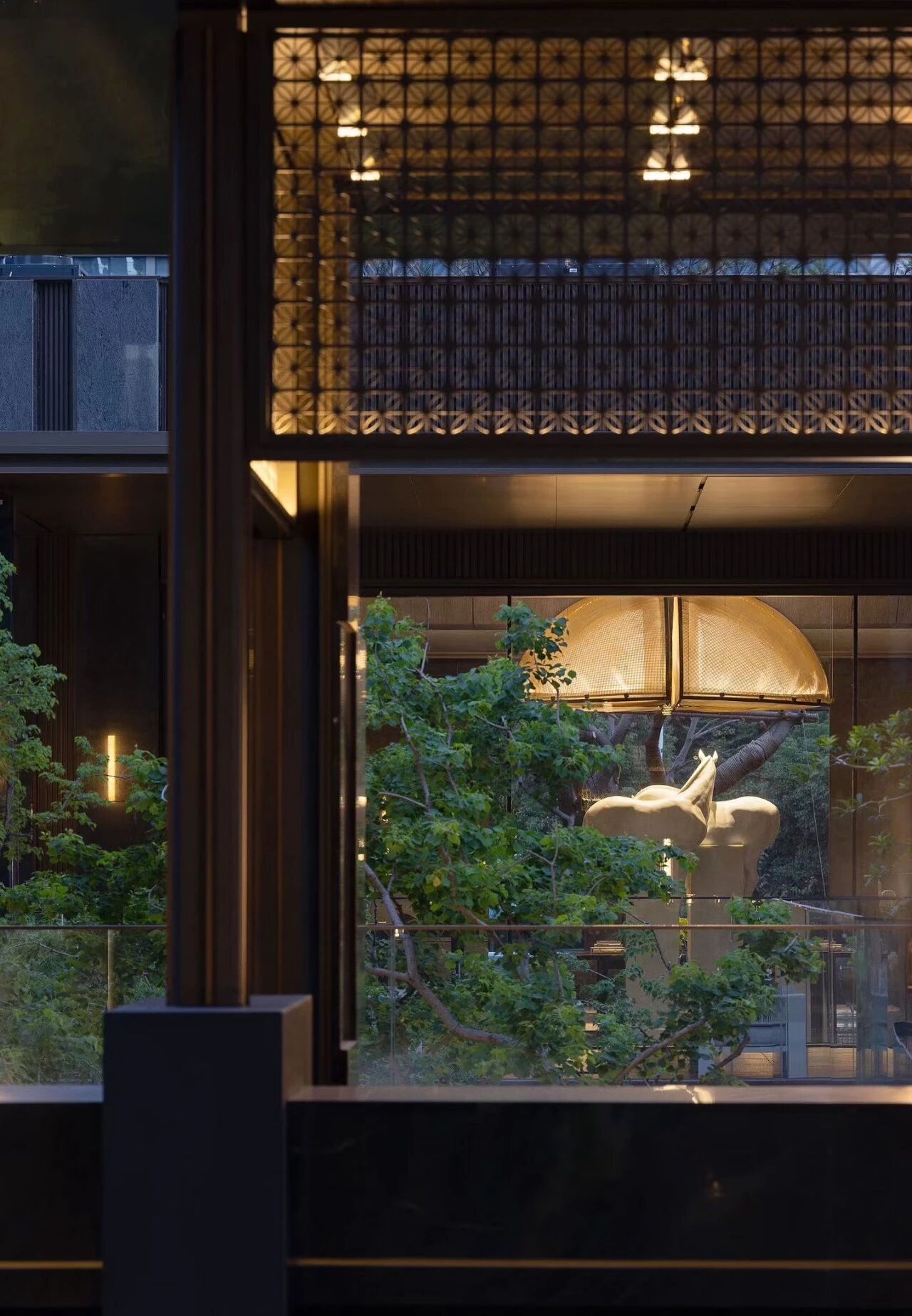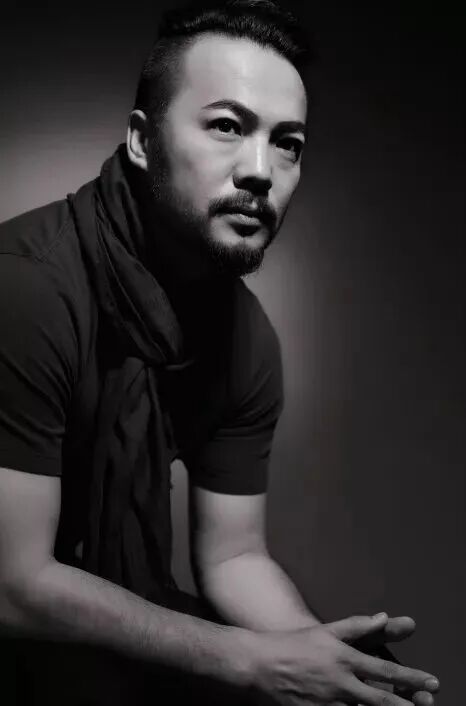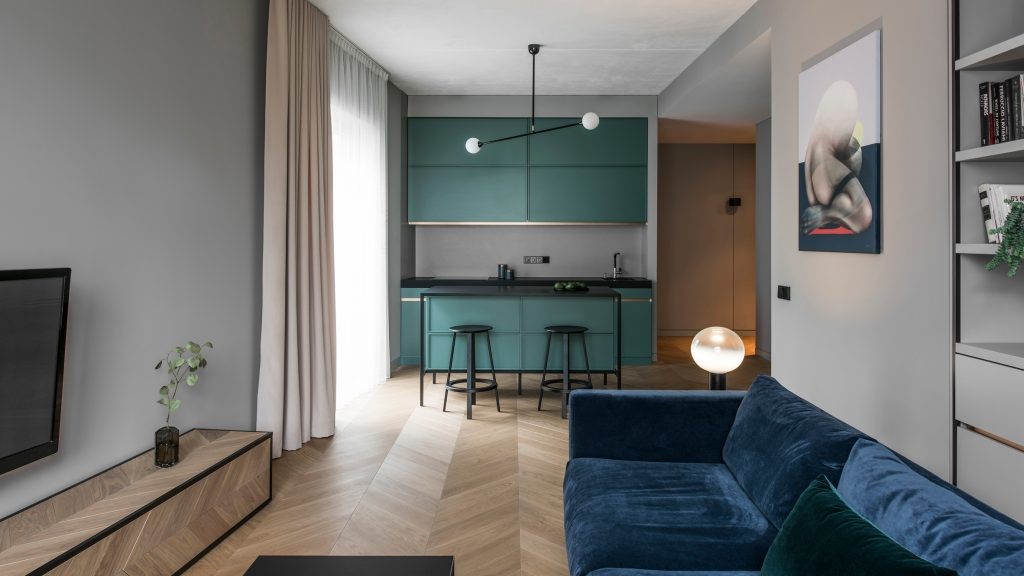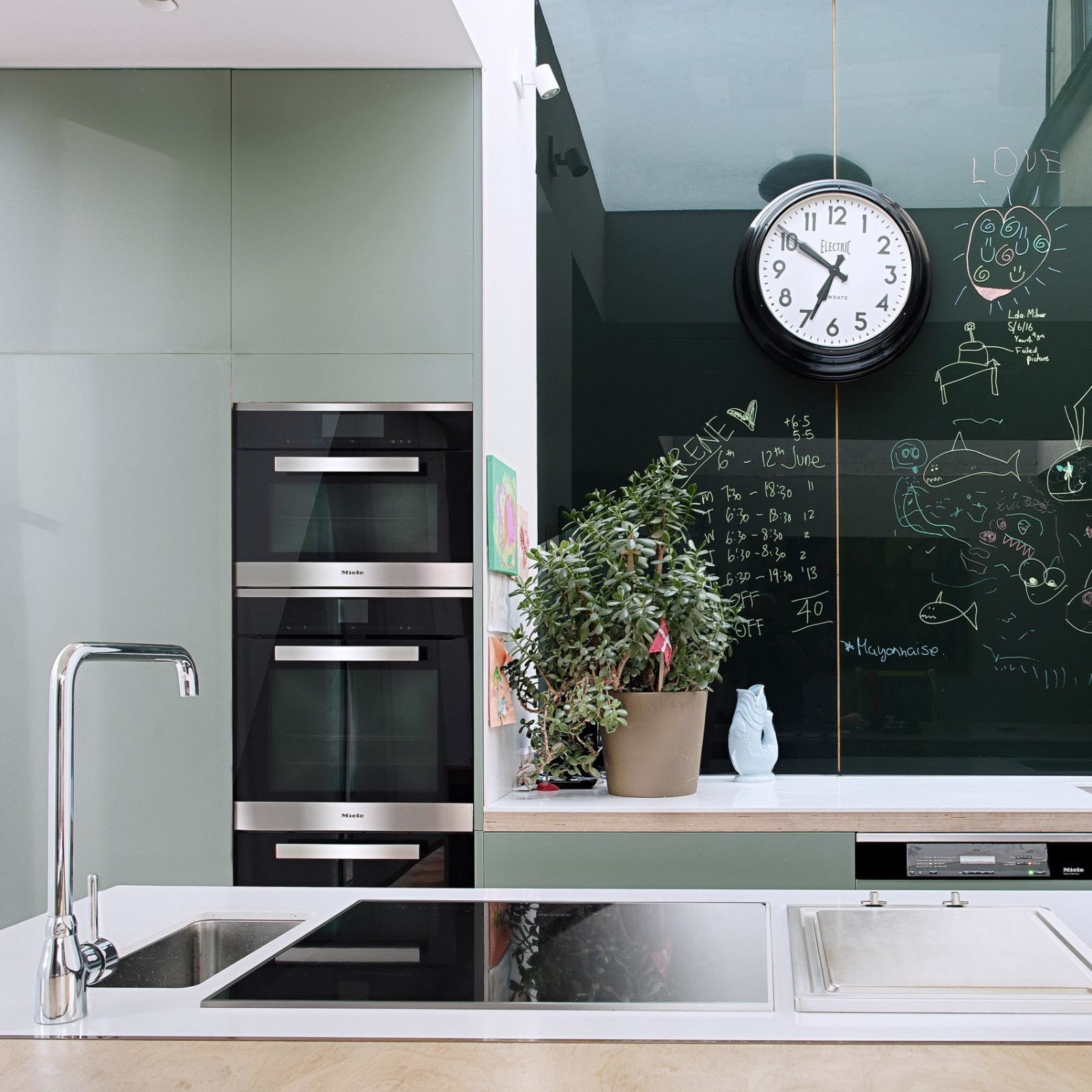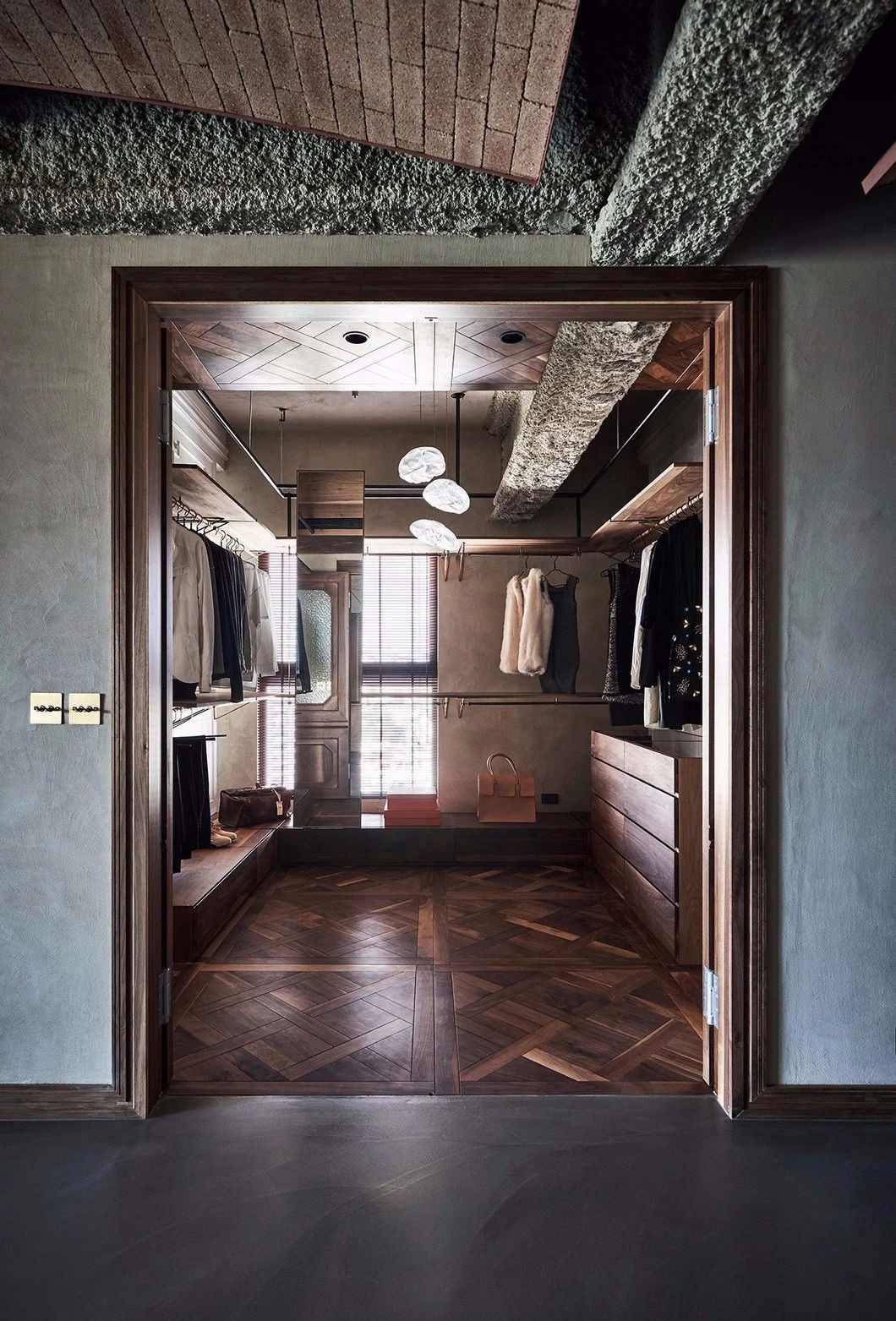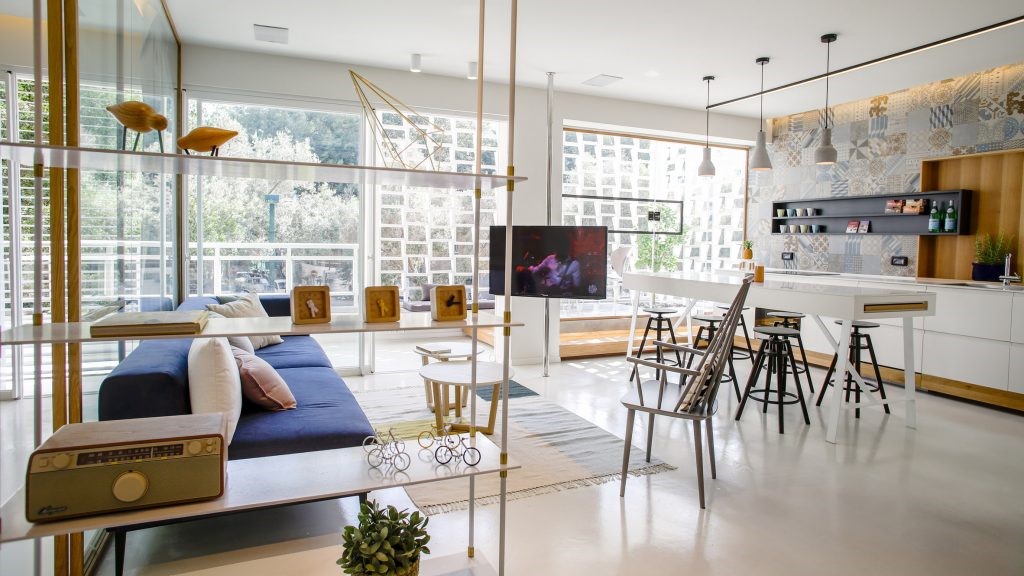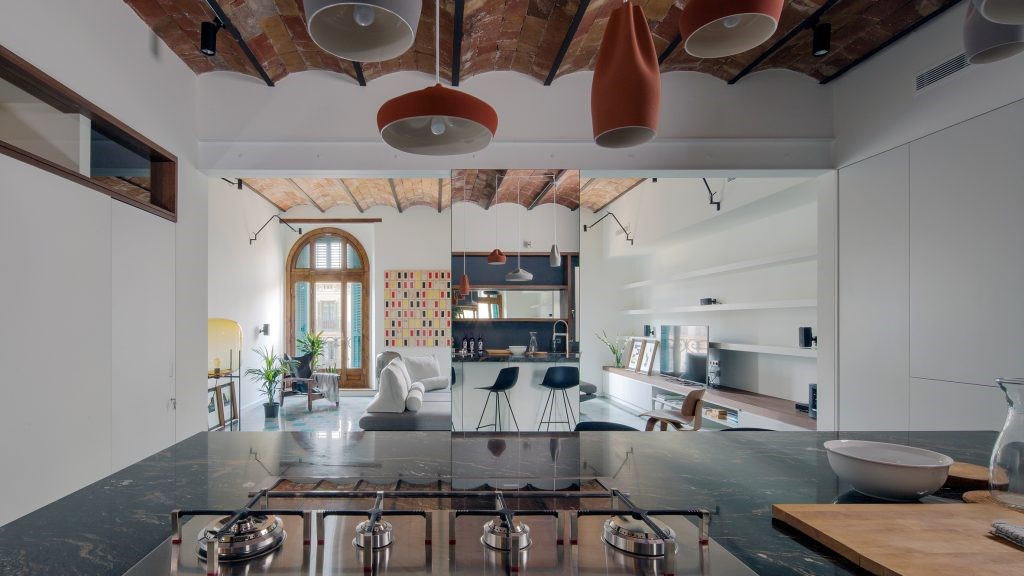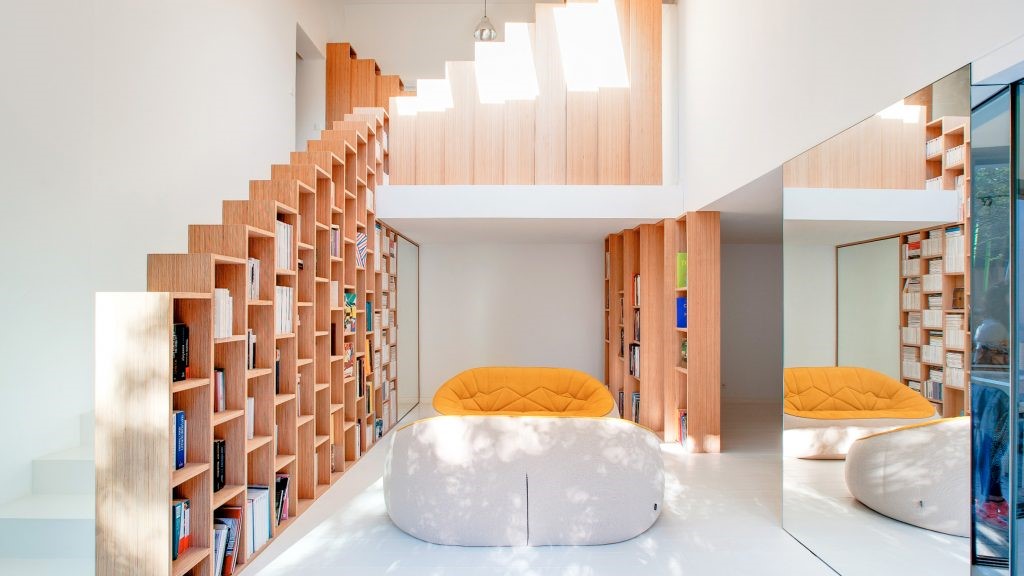Casa Kwantes in Rotterdam / MVRDV
2017-03-13 21:26
Casa Kwantes bases itself around the clients’ desire for seclusion and privacy, whilst having a maximum of daylight and open living spaces. From the road, the bare brick wall offers only a partial glimpse into the property and family life through an opening of the white brickwork façade – a subtle indented entrance leading into an initially dark and enclosed entrance hall. In contrast, the reverse of the property completely opens up to the south with curved windows following the entire winding façade wrapped around a central olive tree.
卡萨·宽特斯(CasaKwantes)以客户对隐居和隐私的渴望为基础,同时拥有最大限度的日光和开放的居住空间。从道路上看,裸露的砖墙只能通过白色砖墙的开口部分窥见房产和家庭生活-这是一个微妙的缩进入口,通向一个最初黑暗而封闭的入口大厅。相反,房地产的反面完全向南敞开,沿着环绕着一棵中央橄榄树的整条蜿蜒的外墙向南延伸。
The 480m2 private home designed by MVRDV has a distinct night-daytime separation. It is located west of Rotterdam on a corner plot of the site of an old hospital. On entering through a curved indent in an otherwise flat and mysterious façade with Celosia brickwork detail, visitors are led into the entrance hall. Stepping into the property, it suddenly opens into the well-lit living spaces of its curved and fluid interior. This continuous wall also serves as an entrance to the garage and staircase. The living room and library take up the rest of the space, wrapped around a curvaceous and carved out courtyard that frames the focal point of the house, the tree. The living room’s backbone is a long fitted closet of wood hiding all domestic functions including the basement, entrance, guest toilet, kitchen cabinets and pantry. The flooring from inside continues outside and essentially turns the courtyard into an extension of the house i.e. as an exterior room. There is a small basement for extra storage, and in addition, a sun trap patio at the bottom of the garden which provides an extra paved barbeque space for Dutch summer days.
由MVRDV设计的480平方米的私人住宅有着明显的夜-日分离。它位于鹿特丹以西,在一家老医院所在地的一个角落里。当进入一个弯曲的缩进一个其他平面和神秘的门面与凯洛西亚砖工细节,游客被引导进入入口大厅。踏进这片土地,它突然打开了它弯曲而流畅的内部明亮的生活空间。这堵连绵的墙也是通往车库和楼梯的入口。客厅和图书馆占据了空间的其余部分,围绕着一个曲线美的四合院,围绕着房子的焦点-树。客厅的支柱是一个长期安装的木壁橱,隐藏所有的家庭功能,包括地下室,入口,客人厕所,厨房橱柜和储藏室。从里面的地板继续从外面,实质上把庭院变成了房子的延伸,即作为一个外部的房间。这里有一个小地下室,可以储存更多的东西,此外,花园底部还有一个遮阳露台,为荷兰夏日提供了一个额外的铺面烧烤空间。
“The curved glass continuously wraps its way around the interior façade on both levels creating continuous views from one room to another. As well as a visual connection, an exterior balcony also creates the opportunity to easily walk from one space to the next without disruption. The glass reflections of the central tree continuously change and bounce around as one moves throughout the house and changes their perspective”, says MVRDV co-founder, Jacob van Rijs.
“弯曲的玻璃在两层的内墙周围不断地缠绕,形成了从一个房间到另一个房间的连续视图。除了视觉连接之外,外部阳台还创造了在不受干扰的情况下轻松地从一个空间走到另一个空间的机会。MVRDV的联合创始人雅各布·范里斯(Jacob Van Rijs)说:“当一个人在房子里走动,改变他们的视角时,中央树的玻璃反射就会不断地变化和反弹。”
In order to maintain a responsible environmental footprint, the house has discreetly installed a ground source heat pump, heat exchange system and a roof with solar panels. The solar panels compensate for energy lost from the house’s glazing producing enough energy for it to run entirely on electricity. Casa Kwantes has the potential to become entirely self-sufficient and these installations will be tested in the course of the next year. The living spaces absorb the most sunlight yet for summer months, they have sun shading due to floors cantilevering out slightly. The design process of the home closely followed MVRDV’s commitment to working closely with clients throughout. With almost daily communications, the end result comes as close to a tailor-made home as possible.
为了保持一个负责任的环境足迹,房子已经谨慎地安装了一个地面源热泵,热交换系统和一个带有太阳能电池板的屋顶。太阳能电池板弥补了房屋玻璃造成的能量损失,产生了足够的能量,使其完全依靠电力运转。CasaKwantes有完全自给自足的潜力,这些装置将在明年进行测试。在夏季的几个月里,居住空间吸收了最多的阳光,由于地板稍微向外倾斜,它们有遮阳作用。家庭的设计过程密切遵循MVRDV的承诺,与客户密切合作始终。随着几乎每天的沟通,最终的结果是尽可能接近一个定制的家。
When balancing municipality requirements for a retro style architecture, the home became a contemporary take on 1930s modernism with its long, cream, shallow brickwork, full-height glazing, and the contrasting integration of the flat and fluid, open and enclosed, flexible and defined. As the newly built homes in the vicinity are more vernacular in their modernist approach, this variation on a more avant-garde architecture has been the subject of discussions with the municipality.
当平衡市政当局对复古风格建筑的要求时,这座住宅以其长长的、奶油、浅浅的砖瓦、全高的玻璃,以及平与水、开放与封闭、灵活和明确的结合,成为了20世纪30年代现代主义的当代典范。由于附近新建的房屋在其现代化的方式上更加土生土长,这种对更前卫的建筑的变化一直是与市政当局讨论的主题。
Architect: MVRDV Project Name: Casa Kwantes Design Team: Winy Maas, Jacob van Rijs, Nathalie de Vries with Frans de Witte, Herman Gaarman, Arjen Ketting and Brygida Zawadzka Location: Rotterdam, The Netherlands Area: 480.0 m2 Photographer: Ossip van Duivenbode
建筑师:MVRDV项目名称:Casa Kwantes设计团队:winy Maas,Jacob van Rijs,Nathalie de Vries with Frans de Witte,Herman Gaarman,Arjen Ktin和Brygida Zawadzka地点:鹿特丹,荷兰地区:480.0平方米摄影师:OsSIP van Duivenbode
 举报
举报
别默默的看了,快登录帮我评论一下吧!:)
注册
登录
更多评论
相关文章
-

描边风设计中,最容易犯的8种问题分析
2018年走过了四分之一,LOGO设计趋势也清晰了LOGO设计
-

描边风设计中,最容易犯的8种问题分析
2018年走过了四分之一,LOGO设计趋势也清晰了LOGO设计
-

描边风设计中,最容易犯的8种问题分析
2018年走过了四分之一,LOGO设计趋势也清晰了LOGO设计





















































